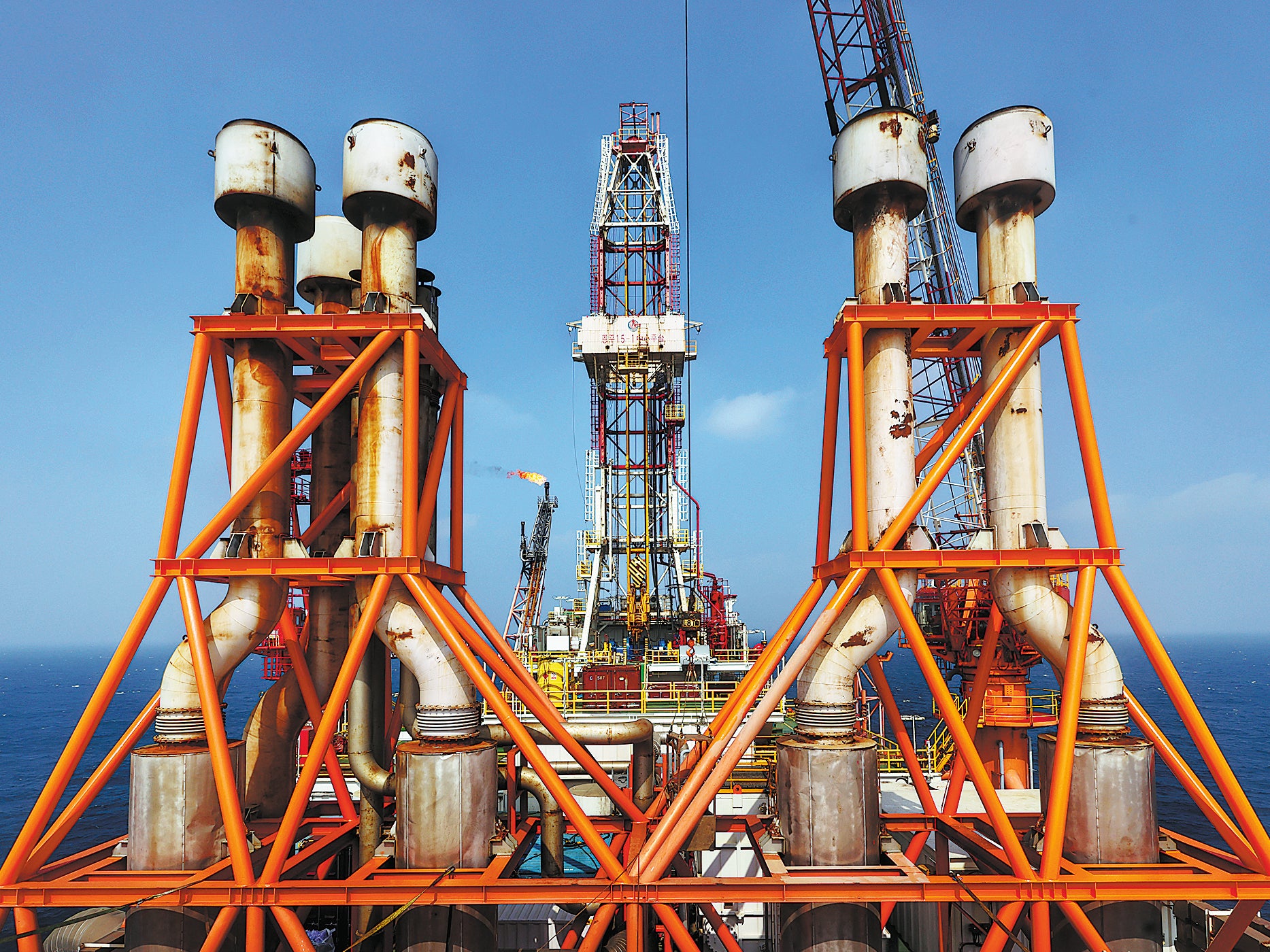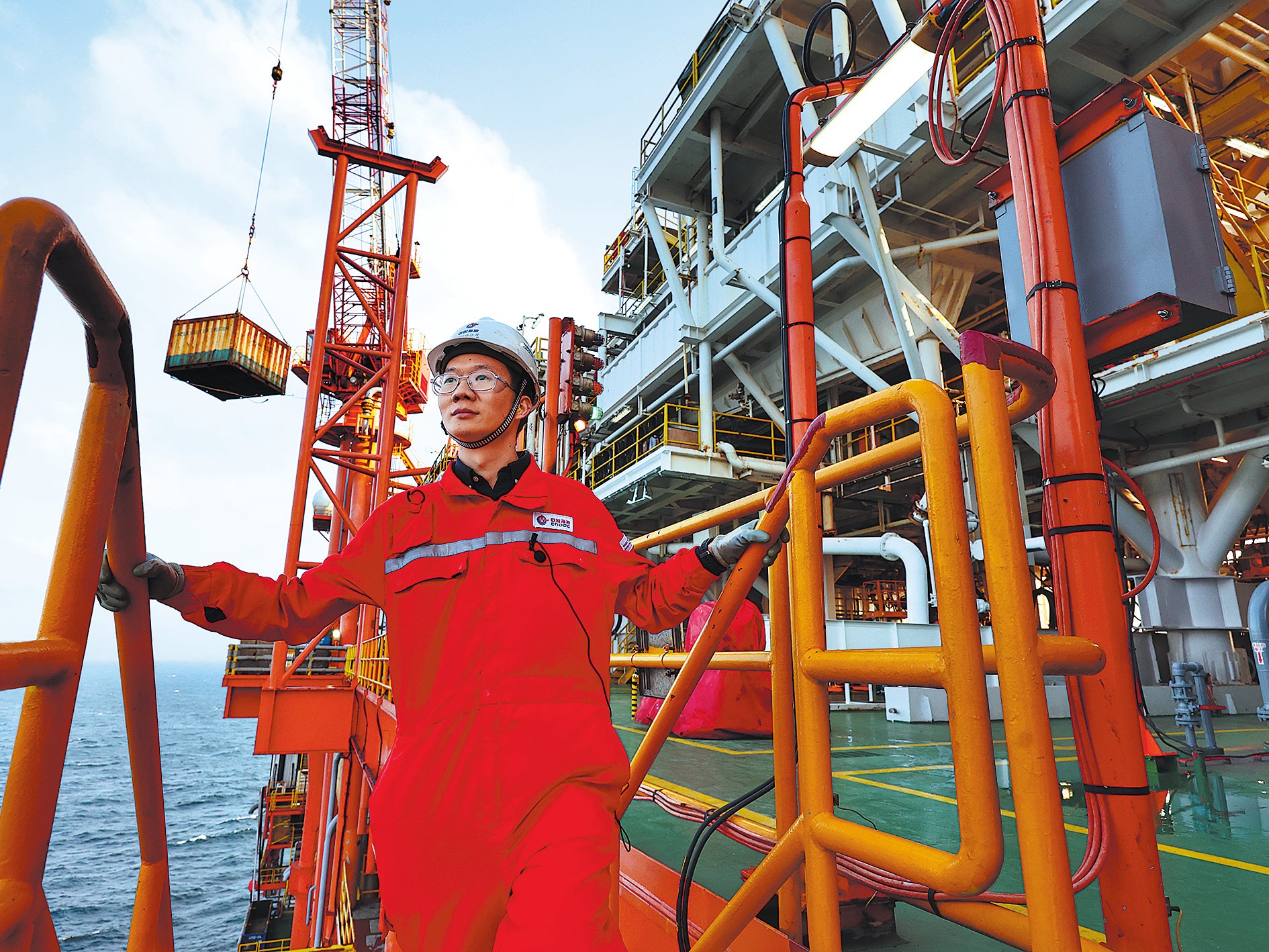Deep-sea vault built to capture CO2
THE ARTICLES ON THESE PAGES ARE PRODUCED BY CHINA DAILY, WHICH TAKES SOLE RESPONSIBILITY FOR THE CONTENTS

In a breakthrough to keep carbon dioxide permanently locked away, China has built a secure “prison” for the greenhouse gas deep beneath the South China Sea.
Located about 124 miles southwest of Shenzhen, Guangdong province, the Enping 15-1 oil platform hosts the country’s first megatonne-sized offshore Carbon Capture, Utilisation and Storage project. The platform, Asia’s largest offshore oilfield, is operated by China National Offshore Oil Corporation.
The facility is designed to capture, secure and store 1.5 million metric tonnes of carbon dioxide annually — equivalent to planting 14 million trees or taking 1 million cars off the road for 30 years. Since its launch in June 2023, it has already injected and stored 180,000 tonnes of carbon dioxide beneath the seabed, marking a major step in China’s fight against climate change.
The Enping 15-1 oil reservoir was selected for China’s offshore CCUS demonstration project due to its unusually high CO2 content — a trait that once made extraction unviable. Traditionally, tapping such reserves would release carbon dioxide in the reservoir into the atmosphere, risking corrosion of platforms and pipelines while polluting the environment.

Recent advances in CCUS technology, however, have turned this challenge into an opportunity. The project now uses “CO2 flooding”, a circular process where the capture system traps the carbon dioxide that emerges from extraction, and injects it for further oil extraction and permanent sequestration.
The method is a well-established CCUS technique used in oil drilling to enhance oil recovery. In this process, CO2 captured from industrial activities is transported via tanker trucks or pipelines and injected into oil reservoirs. The gas increases pressure, displacing scattered crude oil and boosting extraction rates, explained Xie Mingying, chief reservoir engineer at the Nanhai East Petroleum Research Institute at CNOOC’s Shenzhen branch.
The Enping 15-1 oil platform announced it would begin CO2 flooding in May. Previously, captured CO2 had only been stored in a geological “dome”— a seabed structure 2,620 feet deep and located 1.86 miles from the platform.
Traditional oil recovery methods typically extract just 18 to 20 per cent of a reservoir’s crude oil.
However, CO2 flooding can increase recovery rates by 7 to 15 per cent and extend the reservoir’s life span by 15 to 20 years, according to Tang Yong, a professor at Southwest Petroleum University’s Petroleum Engineering School.
The use of CO2 flooding will foster a win-win scenario by reducing emissions while enhancing oil production, said Mei Chuang, offshore installation manager of the Enping 15-1 platform. This marks a major leap from CO2 storage alone, to its active utilisation.
Over the next 10 years, the project will inject over 1 million tonnes of CO2 into the Enping 15-1 oilfield, increasing crude oil production by 200,000 tonnes.
Li Wei, an offshore installation manager at the oil platform, said the associated gas in Enping’s reservoir contains an exceptionally high CO2 concentration of about 95 per cent.
This gas undergoes a rigorous treatment process: separation and consolidation followed by dehydration and filtration through a pressurisation system, before being injected into a dome structure within the deep saline aquifer.
While some sequestered CO2 may resurface during oil recovery, it’s recaptured and reused, creating a closed-loop system that boosts production while slashing emissions.
In its quest for net-zero emissions, China is betting big on the nascent technology.
As of November 2022, the number of CCUS demonstration projects in China in operation, under construction or being planned, was more than 100, according to CCUS Progress in China — a status report released in 2023 by the Global CCS Institute, Tsinghua University, and the Administrative Centre for China’s Agenda 21.
Nearly half the projects are operational, the report said, with an annual CO2 capture capacity exceeding 4 megatonnes and injection surpassing 2 megatonnes — marking increases of roughly 33 per cent and 65 per cent respectively, since 2021.
In April 2024, China unveiled its first batch of green, low-carbon technology demonstration projects eligible for government grants. Of 47 selected projects, six were CCUS technology related.
